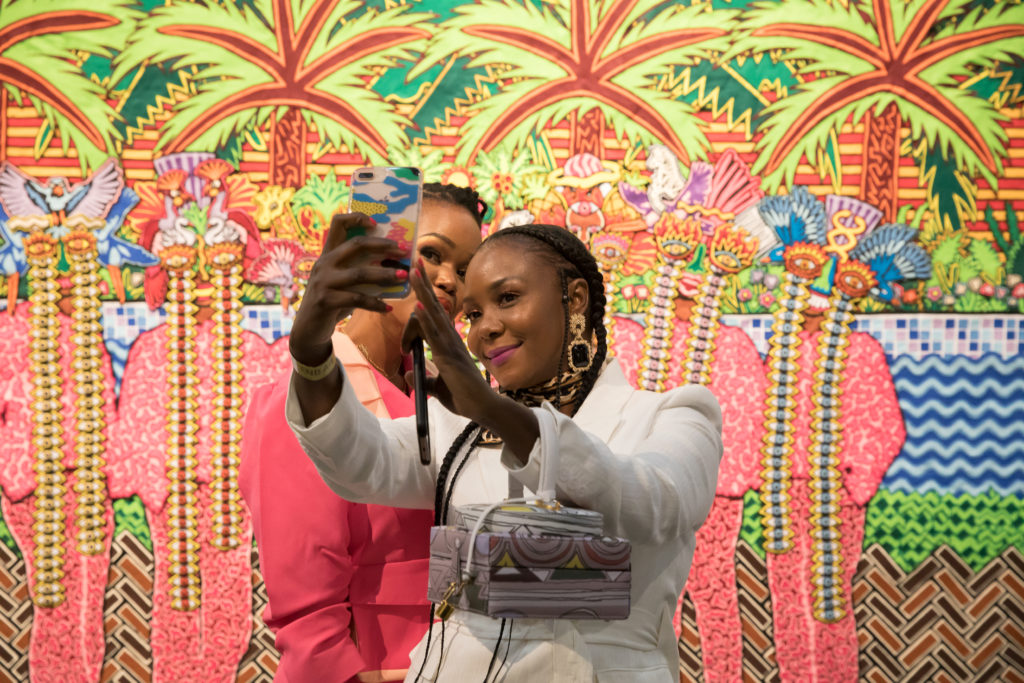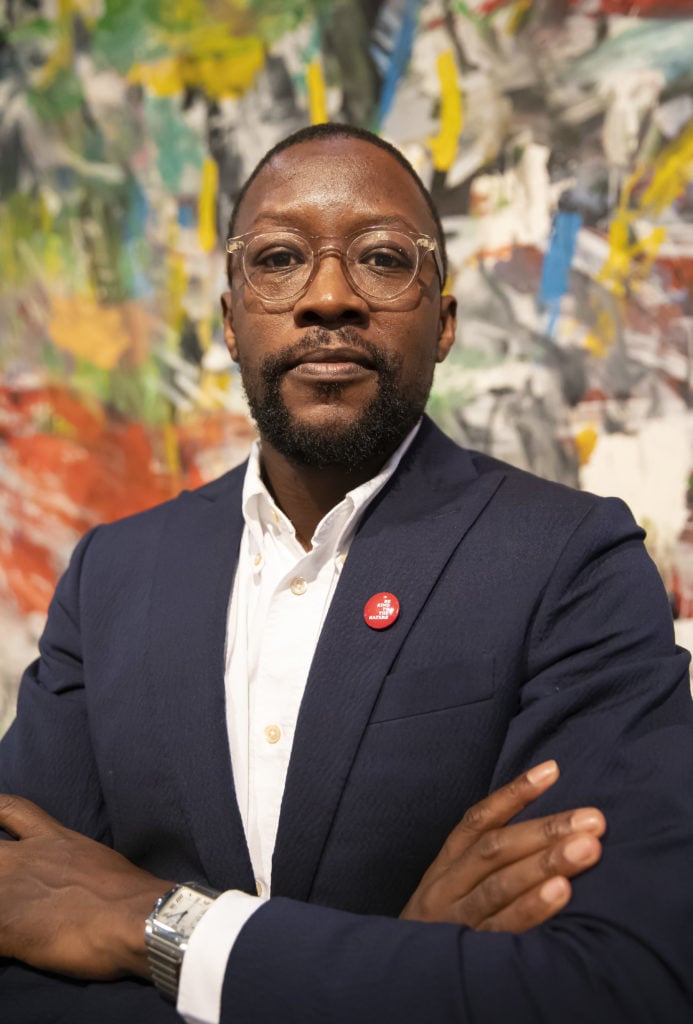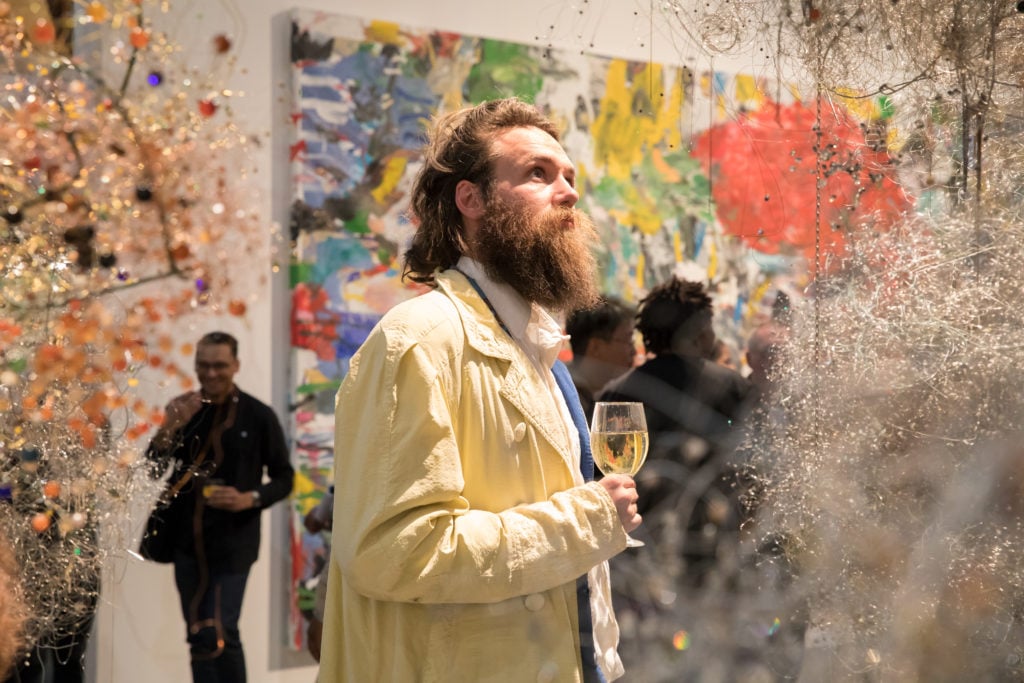Art World
Art Joburg, Overhauled With a New Owner and Business Model, Makes the Case for Johannesburg as the Capital of Africa’s Art Scene
Mandla Sibeko is taking Africa’s oldest fair in a new direction.

Mandla Sibeko is taking Africa’s oldest fair in a new direction.

Naomi Rea

As the market for contemporary art from Africa gathers heat, many collectors are eagerly waiting for tastemakers on the continent to pinpoint a region on which to concentrate.
Unlike in Asia, where Hong Kong has emerged as a clear market nexus for the broader region, an obvious market hub has not been established in Africa in the same way. This is despite a groundswell of activity in a few different cities, including Marrakech, Lagos, and Accra. Fairs like 1-54 Marrakech, ART X Lagos, and the Cape Town Art Fair are all competing for the attention of international and local collectors interested in the continent, but it might be wise to look also to the site of Africa’s oldest fair, FNB Art Joburg, for some answers.
As far as infrastructure goes, South Africa has a head start on the rest of the continent. A number of leading galleries, including Stevenson and Goodman Gallery, are based there, and there are a growing number of world-class institutions there, including the Zeitz MOCAA museum, A4 Foundation, and the Norval Foundation in Cape Town. Johannesburg is also home to the new Javett Art Centre at the University of Pretoria.
Amid all the institutional activity, Johannesburg, the country’s largest city, is also making a case for itself as an international market center. There is the promise of a new private institution, the brainchild of local collector Gordon Schachat, on the horizon, plus more and more galleries, which might have opened flagships in the more tourist-friendly Cape Town, are seeing a need for a presence in the capital city. And Art Joburg (formerly the Joburg Art Fair), now entering its twelfth edition, makes a strong case for the city’s draw.
Under new management, this year’s edition of FNB Art Joburg, which ran September 13 through 15, upped the game on previous editions. Now owned by the Johannesburg entrepreneur Mandla Sibeko, who was a minority shareholder in and a director of the previous iteration of the fair, FNB Art Joburg has undergone a few notable changes. Now 60 percent smaller than it was last year, it welcomed 17 galleries on an invitation-only model in response to growing dissatisfaction from participating galleries who were unhappy with the structure and model of the old fair, to the point that the main exhibitors departed en masse, only returning in the past three months since Sibeko took over the helm.
The new focused version of the fair offers an elevated experience, and the smaller number of participants made room for a new section, titled “Max,” where larger scale works by African artists that are usually only presented in places like Art Basel or the Venice Biennale, such as a large-scale photographic installation by Zanele Muholi, could be shared with a local audience.
“Our aim is to make sure that we become the platform people would come to if they are looking for the best of the best of African artists,” Sibeko tells artnet News.

Mandla Sibeko.
Sibeko, who is a supermarket and e-commerce entrepreneur, pointed out that it’s important to him that the fair is now helmed by a black owner. “You must remember that South Africa 27 years ago was very segregated, we came out of apartheid, so many spaces like in the art world the business world, you could not find black people as leaders,” Sibeko says. Cape Town art fair, for example, is owned by Fiera Milano, an Italian company (which also owns Milan’s Miart fair).
“It’s really part of changing the narrative that we need to make sure that we become reflective of the dream of people like Nelson Mandela, that one day South Africa would be diversified, and would have leadership of black, white across all our institutions and platforms.”

FNB Art Joburg 2019. Photo by Karabo Mooki/FNB Art Joburg.
When speaking about South Africa internationally, especially when it comes to the art scene, Cape Town is cited more frequently as a hub, being home to institutions such as Zeitz MOCAA, Norval Foundation, and A4 Foundation. Art collector Louis Norval, founder and chair of the board at the Norval Foundation was among the collectors roaming the fair in Joburg.
When it comes to which South African cities are attracting the most attention, Norval says that Cape Town is an obvious choice for many because already has a place in the global tourism calendar. “Cape Town as a city sells itself. We just get the benefit of that,” he says. “The Beyeler Foundation [in Switzerland] has a great big picture window. We have a great window too, but our view is nicer.”

FNB Art Joburg 2019. Photo by Karabo Mooki/FNB Art Joburg.
Liza Essers, the owner and director of Goodman Gallery, which has spaces in both Cape Town and Johannesburg, takes a different view. “South Africa is definitely the center of the art market of the continent,” she says, “and Joburg is the cultural center of the continent, where the heartbeat lies.”
Essers makes the case for Joburg from a production perspective, with artists like Mikhael Subotzsky, Nicholas Hlobo, and William Kentridge all basing their studios in the city. Kentridge has also set up (and funds) an exciting nonprofit, the Centre for the Less Good Idea, an interdisciplinary incubator that supports experimental, and collaborative arts projects.
The city is also home to important collectors such Brian Joffe, Pulane Kingston, and Gordon Schachats, whose upcoming Southern African Foundation for Contemporary Art was a talking point at the fair. Johannesburg’s art week is also rounded out by another coinciding art fair, Latitudes, and the UNDERLINE show, a curator-led exhibition platform that offers no-cost exhibition space to innovators at the Museum of African Design.
But when it comes to naming a leading art destination on the continent, Sibeko says he doesn’t think Africans should be “competing” to become the hub. “They should be looking at where the scene is most established, or what’s attractive about one city over another, and where the tourism levels are heading,” he says.
In terms of sales, the new version of the fair seems to have had a successful pilot edition. On the first day of the fair, Goodman Gallery was able to “more than cover costs,” and all the major South African collectors were there, though sales were down from the previous year, in part due to an economic recession. “South Africans don’t feel like spending at the moment,” Essers says.

Igshaan Adams, detail of Ontdoen (2018). Courtesy of black projects.
That said, by the end of the fair, SMAC gallery had sold 16 works by 11 artists at prices ranging from R50,000 (around $3,000) to R1 million (around $68,000). Blank Projects parted with a work by Bronwyn Katz for €7,000 ($7,750), four works by Igshaan Adams ranging from €13,000 to €22,000 ($14,400 to $24,400). Everard Read sold 17 works by a variety of artists for prices ranging from R70,000 (around $5,000) to around R1 million (around $68,000). Kalashnikovv sold works by four artists, including two large-scale pieces Ayanda Mabulu and Jake Singer.
But the galleries were not just focused on sales. One particularly interesting aspect of the new fair was the introduction of a new section of invited emerging galleries, which accounted for nearly half the exhibitors, who were mentored by the established galleries including Stevenson, Blank Projects, and Goodman Gallery. “Here we have quite an interesting economy; you have a first world country but you also have a third world country. So I think that it is so important that as much as we build our businesses we need to be conscious of how can we contribute to keep growing the ecosystem,” Sibeko says.
So alongside schmoozing with collectors and top-dollar sales, the established galleries were also running crash courses in the best practices, from applying for art fairs to writing press releases to working with artists, and placing works in the right collections.
Sibeko is already looking ahead to next year, and is about to embark on a roadshow to attract more attention from international collectors, starting in London at Frieze. Next year he hopes to partner with galleries from Brazil, the US, and UK that can compete at the level of the fair’s existing galleries. “In a short timeframe, we have done well,” Sibeko says. “But we have a long way to go.”